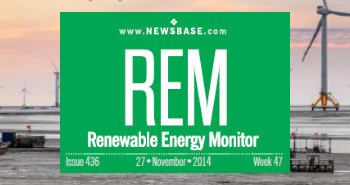Australia inaugurates first large-scale CCS project

“We have made history out at Moomba. It’s a first for Santos, a first for South Australia, and a first for Australia in terms of large-scale, onshore CCS,” Santos CEO Kevin Gallagher said.
WHAT: Australia has officially cut the ribbon on its first large-scale CCS project.
WHY: The Moomba facility can store up to 1.7mn tonnes of CO2 annually – equivalent to 10% of South Australia’s emissions in 2022.
WHAT NEXT: Australia could potentially store up to 20bn tonnes of CO2, and could position itself as a CCS hub for the wider Asia-Pacific region.
South Australian energy companies Santos and Beach Energy officially inaugurated the country's first large-scale onshore carbon capture and storage (CCS) project at Moomba in the Cooper Basin on January 31, marking a milestone in Australia's decarbonisation efforts.
The Moomba CCS project commenced operations in October 2023 and has already sequestered 340,000 tonnes of CO2 equivalent. At full capacity, the facility is capable of storing up to 1.7mn tonnes per year (tpy) of CO2, which is approximately 10% of South Australia’s total emissions in 2022.
CCS at Moomba involves capturing CO2 from industrial processes, compressing it, and transporting it via pipeline to depleted underground reservoirs. These reservoirs, previously used for natural gas extraction, provide secure geological formations where CO2 can be permanently stored. The captured CO2 is injected into these formations at high pressure, where it becomes trapped under layers of impermeable rock, preventing leakage. The project utilises advanced monitoring systems to track CO2 movement and ensure long-term containment.
The Australian government has introduced several policies to support CCS, recognising its role in meeting national and international climate commitments. The federal government provides funding incentives through the Australian Carbon Credit Units (ACCUs) scheme, allowing CCS projects to generate tradeable credits. The South Australian state government has also backed the initiative, integrating CCS into broader energy transition plans. However, industry stakeholders have called for increased regulatory clarity and streamlined approvals to facilitate further investment in CCS infrastructure.
Santos CEO Kevin Gallagher described the project as a landmark achievement, stating, “We have made history out at Moomba. It’s a first for Santos, a first for South Australia and a first for Australia in terms of large-scale, onshore CCS.” He highlighted the project's cost efficiency, estimating carbon capture at less than AUD49 ($30.8) per tonne. He further noted that Moomba CCS could offset more CO2 in four days than 10,000 electric vehicles (EVs) save in a year.
Beach Energy CEO Brett Woods also underscored the project's significance, describing it as a “landmark moment” for Australia's emissions reduction capacity. “At capacity, the emissions reduction delivered by Moomba CCS is equivalent to taking 700,000 petrol cars off our roads each year. And that could be just the beginning,” he said, adding that millions of tonnes of additional storage capacity are available for potential future expansion.
The performance of the Moomba CCS project has exceeded initial expectations, with ramp-up and commissioning progressing ahead of schedule. Beach Energy, which holds a 33.3% interest in the project, sees CCS as a key enabler for reducing emissions while continuing to support energy security.
Australia’s CCS potential
CCS is increasingly seen as a necessary tool in global decarbonisation efforts. The International Energy Agency (IEA) has stated that achieving net-zero emissions by 2050 would be “virtually impossible” without large-scale deployment of CCS. Moomba CCS places Australia among a growing number of nations investing in CCS as part of their emissions reduction strategies.
Similar projects in other parts of the world include the Sleipner and Snøhvit CCS projects in Norway, which have been operating for over two decades, and the Gorgon CCS project in Western Australia, one of the world’s largest. The US has also been expanding CCS through the 45Q tax credit scheme, incentivising carbon capture in the industrial and energy sectors.
Energy consultancy Wood Mackenzie estimates that Australia could unlock up to A$600bn in revenue by positioning itself as a CCS hub for the Asia-Pacific region, providing storage solutions for emissions-intensive industries in neighbouring countries such as Japan and South Korea.
Australia possesses substantial potential for CCS, with estimates indicating a storage capacity exceeding 20bn tonnes of CO2 in at least four strategic sedimentary basins, both onshore and offshore, according to the government.
A comprehensive national assessment conducted in 2009 evaluated Australia's capacity to transport and store CO2. This high-level study considered geological characteristics and other factors to determine the potential and ranking of sedimentary basins suitable for CO2 geological storage. Further research by the Commonwealth Scientific and Industrial Research Organisation (CSIRO) has assessed Australia's carbon sequestration potential, exploring how technical innovations can reduce costs and overcome barriers to implementation.
Despite its promise, CCS remains a contentious issue in the broader energy transition debate. Critics argue that it prolongs the use of fossil fuels, while proponents contend that it is essential for reducing emissions from hard-to-abate industries such as steel, cement and chemicals.
For now, Moomba CCS is delivering tangible emissions reductions, contributing to Beach Energy’s target of cutting emissions intensity by 35% by 2030. Its success could pave the way for further CCS developments in Australia, reinforcing the country's position as a leader in decarbonisation technologies while supporting its LNG and gas export industries.




Follow us online